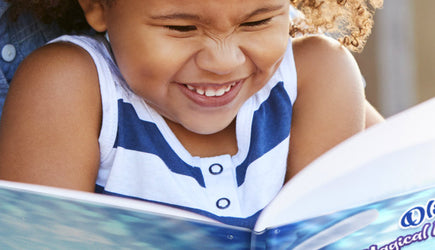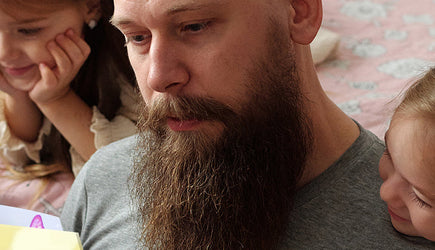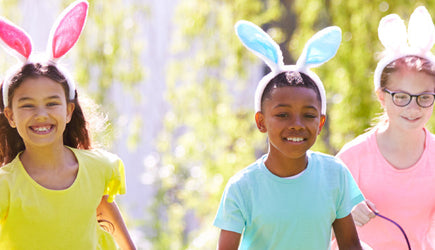10% Off Your First Order
Be first to know about new stories and offers

Christmas stories have captivated young minds for generations. Each December, families gather around twinkling trees and cozy fires to listen as pages turn, weaving images of reindeer flight, sugar plum dances, and acts of kindness. Early engagement with holiday-themed tales helps shape imagination, build narrative understanding, and foster a lifelong passion for reading. In recent decades, the publishing landscape has grown more varied. Alongside time-honored classics, a new trend has emerged: personalized Christmas books that place a child at the very center of the plot.
Both classic and personalized holiday books play a role in a child’s literary journey. Classic stories introduce shared cultural touchpoints and timeless moral lessons. Personalized tales offer direct involvement, using a child’s name, hometown, and even family details. By making characters spring to life in the pages, those books can fire a young reader’s enthusiasm like nothing else.
Industry data highlights how firmly children’s literature remains a growth sector. The U.S. children’s book market reached approximately $1.78 billion in sales in 2022, showing steady demand for printed and digital formats. At the same time, the share of holiday-themed titles climbed by 12 percent that same year, proof that seasonal storytelling continues to resonate. Within these figures, publishers now allocate more resources to both reviving well-loved narratives and commissioning personalized series.
This article will explore the unique strengths of classic Christmas literature and the fresh appeal of personalized tales. You’ll read about how traditional works like A Christmas Carol and The Night Before Christmas impart values and connect generations. Then you’ll discover how books tailored to a child’s identity can boost engagement, vocabulary growth, and self-esteem. Finally, we’ll offer guidance on selecting age-appropriate options, spotlight real-world examples, and invite families to share their own favorite holiday reads.
The Charm of Classic Christmas Books
Classic Christmas stories have woven their way into holiday traditions for well over a century. Titles such as Charles Dickens’s A Christmas Carol (1843) and Clement Clarke Moore’s poem The Night Before Christmas (1823) remain synonymous with December. These works define what many people envision when they think of Christmas literature: ghostly visits, joyful wake-ups at dawn, and a family gathered around the hearth. They share universal themes—redemption, generosity, wonder—that transcend time and place.
One major draw of classic tales is nostalgia. Adults who grew up hearing these stories often pass them down to their own children, creating a shared family tradition across generations. Each retelling can stir memories of warm kitchens, decoration-hung trees, and grandparents reading aloud with dramatic flair. The sentimental value of these customs anchors holiday celebrations and bonds relatives in a collective experience.
Classic books also offer educational advantages. Complex vocabulary, period-specific details, and varied sentence structures can strengthen a child’s literacy skills. Readers may learn about Victorian London’s social conditions or American Christmas customs from centuries past, broadening historical understanding. Furthermore, these narratives often come with moral lessons. Away from modern distractions, young audiences can reflect on themes of compassion, personal responsibility, and hope.
Beyond print, many classic works have inspired films, stage adaptations, and audio dramatizations. This multimedia presence keeps the material relevant and accessible. Parents can choose between illustrated editions, abridged versions for younger listeners, or annotated copies for older students. In an age where digital reading on tablets grew from 15 percent in 2018 to 35 percent in 2022 (source), classic tales have maintained their status by adapting into e-books and audiobooks. In fact, children’s audiobook listening rose by 38 percent among ages 6–12 in 2022 (source), showing that these stories can thrive in audio format as well.
For parents seeking a link to grandparent-style storytelling or looking to introduce young readers to the treasures of literary heritage, classic Christmas books remain a solid choice. Their combination of tradition, moral messaging, and rich language makes them a cornerstone of any festive library.

Personalized books have grown into a vibrant niche, promising young readers an immersive experience. These titles incorporate the child’s name, hometown, and sometimes even likeness into the illustrations. Rather than following a generic hero, children see themselves depicted as magical adventurers, Santa’s helpers, or the very savers of Christmas Day.
A 2012 study, “Parents reading with their toddlers: The role of personalization in book engagement,” found that stories with a child’s name yield more smiles and laughter during shared reading sessions. In another investigation, researchers discovered that children understood words in the personalized sections of a book significantly better than in standard passages, suggesting that tailoring text to a reader can improve vocabulary uptake. Emotional involvement appears stronger when the narrative refers directly to life details, making the story both educational and emotionally resonant.
Self-esteem benefits also follow. By portraying the child as the hero who solves a Christmas Eve crisis or delivers gifts, these books reinforce positive self-image. A report from a personalized-book provider noted that kids gain confidence when they see themselves portrayed doing brave or kind deeds.
One standout publisher in this space is StoryBug. Their personalized titles place every child at the center of their own snowy adventure, celebrating diverse backgrounds and abilities. StoryBug’s mission is to uplift a child’s unique qualities by weaving inclusive details into each narrative. These keepsakes aim to ignite creativity, support self-expression, and build a lasting love for reading.
Parents and gift-givers appreciate the blend of novelty and intimacy offered by personalized books. They make for memorable holiday presents that a child will revisit year after year. When a youngster spots the familiar name on the cover, excitement spikes and engagement grows. With digital printing advances and print-on-demand services, turnaround times have shortened, making personalized keepsakes readily available for the holiday season.
As children’s market trends shift toward more interactive and individualized experiences, personalized Christmas books represent a clear area of growth. They harness the power of personalization to make storytime both playful and academically beneficial, providing a fresh counterpart to more traditional holiday reads.
Classic and personalized Christmas books each bring distinct methods to captivate young readers. Classic tales often rely on evocative imagery, universal themes, and the excitement of well-known characters. A child flipping through an edition of A Christmas Carol may pause at detailed artwork depicting snow-capped rooftops or feel suspense during Scrooge’s spectral encounters. The familiarity of these narratives can instill comfort and tradition.
Personalized books take a different route. They invite children to step into the role of the protagonist. Reading about “Emma helping Santa find his sleigh” or “Jake saving Christmas cookies” offers an immediacy that classic works seldom match. For emerging readers, recognition of their own name in text can boost attention span and focus, turning reading into an interactive game. That sense of direct involvement may inspire a child to tackle more challenging texts down the road.
Character identification also varies. In classic literature, children relate to Ebenezer Scrooge’s journey or the jolly antics of Clement Moore’s reindeer, but those figures remain separate from the reader’s personal life. Personalized stories blur that line by embedding family traits, local landmarks, or a child’s favorite activities into the plot. When identities align closely, the emotional payoff deepens.
Both types of books can spark a love of reading. A classic may introduce young audiences to authorial styles, rich vocabulary, and moral questions. Once a child engages with universal themes, they often seek out more diverse genres. Personalized stories, on the other hand, can act as a bridge for reluctant readers. As research shows, direct reference to a child’s world increases enjoyment and willingness to explore new pages (source).
Digital consumption trends further shape engagement. Nearly half of children preferred e-books to print in 2022, up to 48 percent from earlier years. Tablet reading rose to 35 percent. When personalized content arrives in digital form, kids scroll, tap, and interact with characters that mirror themselves. This hybrid approach can merge the tactile magic of print with the dynamic features of digital formats.
In sum, engaging young readers often calls for a mix of tradition and personalization. Classic tales build a foundation of narrative skills and shared heritage. Personalized books offer an entry point through direct involvement and self-identification. When combined thoughtfully, these approaches can guide children from their first Christmas encounter to a sustained appetite for reading.
Selecting the ideal Christmas book involves matching a child’s age, interests, and reading level to a format that will keep them turning pages. For toddlers and preschoolers, simple rhymes, bold illustrations, and short narratives work best. They respond enthusiastically to familiar refrains, repetitive text, and interactive elements like lift-the-flap surprises.
As children enter early elementary grades, complexity can increase. Classic holiday tales or mid-length personalized narratives both hold appeal at this stage. A six-year-old may delight in spotting their name among bright illustrations in a personalized book, while also following a slightly older character’s misadventure in a traditional work. Be mindful of reading level: a story peppered with Victorian-era vocabulary may require adult guidance, whereas a personalized tale in contemporary language can build independent reading confidence.
Young readers approaching middle school often appreciate deeper themes. Updated retellings of Dickens or original cliff-hangers that feature a child as the lead can sustain attention. At older ages, families can explore annotated editions of classics or novels with holiday arcs, such as Philip Pullman’s The Ruby in the Smoke, supplemented by personalized short stories as stocking stuffers.
Understanding a child’s personal interests guides selection even more. Littl ewarehouse displays of winter sports or wildlife might pair well with stories about icy sleigh rides or Arctic foxes helping Santa. For creative types, personalized books that allow the child to customize physical traits or favorite hobbies can spark imagination. If a reader enjoys digital interactivity, e-books and audiobooks can open new avenues, especially as audio listening has jumped by 38 percent for ages 6–12.
During the holiday season, gift-giving considerations also come into play. A classic illustrated volume makes a memorable heirloom but may carry a higher price tag. Personalized books often arrive as single copies with customized artwork, making them thoughtful but individual gifts. Combining both—one classic family library title and one personal keepsake—can cover multiple readers and preferences. Retailers and online platforms now offer bundled options that mix a timeless story with a personalized short companion piece, providing dual appeal.
For families seeking tried-and-true Christmas reads, here are some top classic titles and their standout features:
A Christmas Carol by Charles Dickens – A tale of redemption and charity, perfect for older children and adults. Themes of social responsibility still resonate today.
The Night Before Christmas by Clement Clarke Moore – Rhythmic verse and iconic imagery make this poem a staple for preschoolers. Interactive illustrations add playful details.
How the Grinch Stole Christmas! by Dr. Seuss – A humorous story about generosity and community, with whimsical art that appeals across age groups.
Bear Stays Up for Christmas by Karma Wilson – Gentle rhymes and woodland friends provide a comforting read for younger listeners.
The Polar Express by Chris Van Allsburg – Lush paintings and a mysterious nighttime train journey capture the wonder of belief and friendship.
Whether you select a classic printed volume or a printed or digital personalized keepsake, high-quality production values matter. Look for sturdy bindings, pleasing typography, and artwork that supports the text. If you choose digital options, verify compatibility with common tablets and e-readers, and decide if audio narration or read-aloud functions are preferred. Holiday-themed audiobooks saw a healthy rise in usage last year, indicating that many families enjoy listening together (source).
Classic and personalized Christmas books each contribute unique advantages to a child’s reading life. Classic works carry the weight of legacy, cultural continuity, and moral storytelling, while personalized titles offer immediate engagement, vocabulary benefits, and a boost in self-esteem. As families navigate countless choices, mixing both types can create a rich holiday reading program.
Reading classic tales teaches children about narrative structure, historical context, and shared values. These books become touchstones for yearly rituals and cross-generational bonding. Personalized books help readers see themselves in print, making storytime interactive and memorable. They can also serve as treasured keepsakes, a snapshot of childhood that family members revisit over decades.
Integrating both approaches honors literary heritage and embraces modern trends. You might display a classic volume on a coffee table for holiday guests, then tuck a personalized book under the tree for bedtime discovery. Balancing tradition with novelty gives children varied reading experiences, helping them grow as readers, thinkers, and creative storytellers.
 Personalized Storybooks | Psychology Behind Personal Names
Children Seeing Their Name in a Story Kids light up when they hear their own name in a story. Personalizing a tale makes it feel special. It pulls them in. Calls to mind their own world. A name can spark...
July 3, 2025
Personalized Storybooks | Psychology Behind Personal Names
Children Seeing Their Name in a Story Kids light up when they hear their own name in a story. Personalizing a tale makes it feel special. It pulls them in. Calls to mind their own world. A name can spark...
July 3, 2025
 Personalized Storybooks vs Traditional Storybooks: A Deep Dive
Reading has long been a cornerstone of early learning. Parents and educators debate which format best supports cognitive growth and literacy skills. Two clear contenders are traditional storybooks and personalized storybooks...
June 27, 2025
Personalized Storybooks vs Traditional Storybooks: A Deep Dive
Reading has long been a cornerstone of early learning. Parents and educators debate which format best supports cognitive growth and literacy skills. Two clear contenders are traditional storybooks and personalized storybooks...
June 27, 2025
 Easter Memories That Bloom Forever: Beyond the Chocolate Eggs
Easter is a season of sweet treats, joyful gatherings, and the delightful thrill of egg hunts. But what if you could capture the magic of this special time..
March 3, 2025
Easter Memories That Bloom Forever: Beyond the Chocolate Eggs
Easter is a season of sweet treats, joyful gatherings, and the delightful thrill of egg hunts. But what if you could capture the magic of this special time..
March 3, 2025